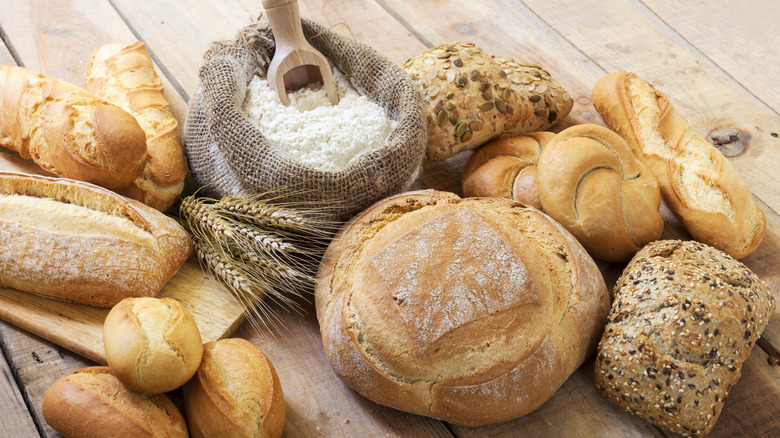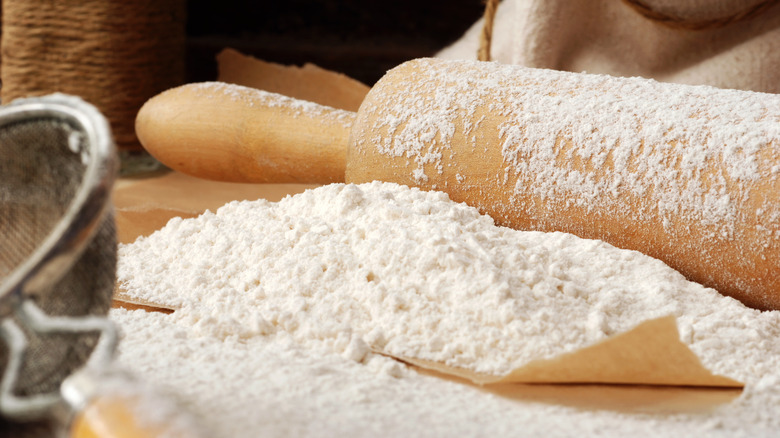Can You Substitute All-Purpose Flour For Bread Flour In Recipes?
With great flour comes great responsibility! And boy does the world have all kinds of flour to choose from. There are whole grain flours, gluten-free flours, and flour that is meant specifically for cake making or bread. Over hundreds of years of agricultural development and lots of experimentation, we've discovered what flours work best for certain kinds of recipes, and for baking bread, there is no better kind than bread flour.
Webstaurant Store describes bread flour as having a high protein (12% and 14%) that has more gluten in it. This will result in that light chewy crumb we all love and crave. Bread flour is ideal to use when making high-quality dough for leavened bread, but bread flour is almost always more expensive than all-purpose, and if you're in a pinch, you may need to pick a different mix even if it means sacrificing some of that gluten elasticity (via Bob's Red Mill).
Bread flour and all-purpose flour aren't the same
Before we tell you if you can switch out these flour or not, it is important to understand exactly what all-purpose flour is. According to Bakerpedia, all-purpose is exactly what it sounds like. It can be used for bread, cakes, muffins, scones, and even pizza and is usually ground from a blend of hard and soft wheat.
Epicurious says that all-purpose flour can range in protein from 9% to 12% which falls right under or at the cusp of the protein range for bread flour. The limited amount of protein in all-purpose compared to bread flour won't make or break your bake. Instead, there just won't be as strong gluten stands in the dough and it will turn out a bit softer than bread using bread flour would. Bob's Red Mill fully supports you switching out your bread flour for all-purpose if need be, and you'll still have a great-tasting bake at the end of the day!

